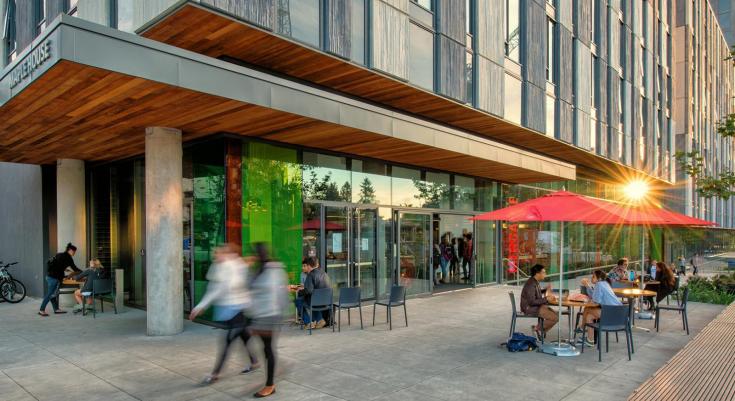
Student housing at UBC is growing fast. So is demand—because students who live on campus are happier, healthier and more engaged.
In the last seven years, UBC has created more than 3,500 new student beds on campus, in five major new developments. Given Vancouver’s housing crisis, this is great for students, more and more of whom are now living and studying on campus instead of commuting. What may be less obvious is how the addition of year-round, centrally located accommodation, is transforming the campus and benefitting the entire UBC community.
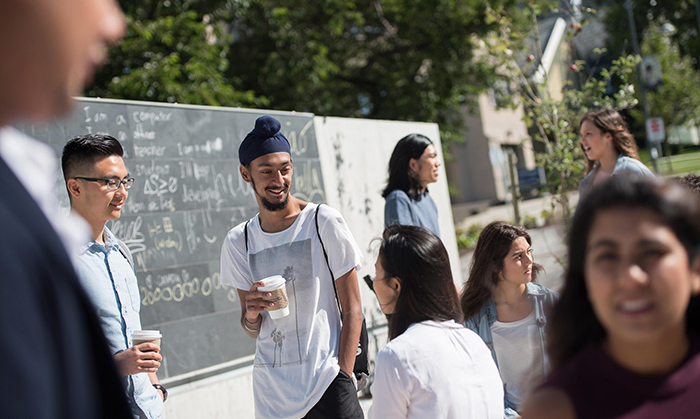
Students gather in an outdoor space at Ponderosa Commons. Credit: UBC Brand and Marketing.
“There’s a remarkable sense of vibrancy on campus that didn’t exist before,” says Andrew Parr, Interim Vice-President Students.
“Historically, we built along the periphery: the west side, Marine Drive, etc. You’d live here and cross the road to go to school. Since 2010, as part of the vision of the Vancouver Campus Plan, we’ve been integrating housing into the centre. It’s made a big campus a bit smaller. Especially on the weekends, at night and in the summer, there’s a dynamism that just didn’t exist a few years ago.”
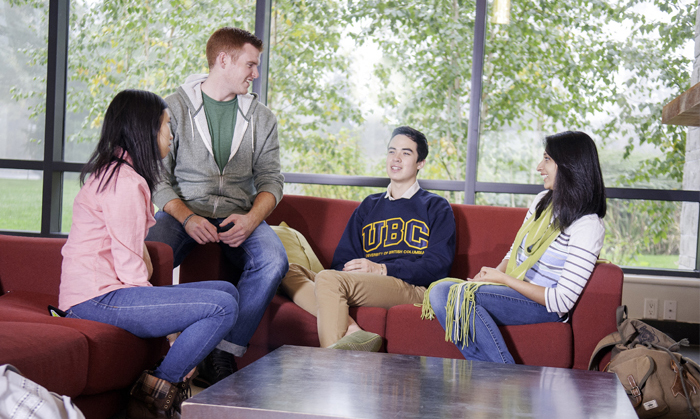
The commonsblock lounge at Marine Drive Residence is a popular space for conversation. Credit: Student Housing and Hospitality Services.
Student Housing Facts 2018-19
- Nearly 13,500 students live in residence (11,795 in Vancouver, 1,678 in Okanagan)
- 18 residence communities (14 in Vancouver; 4 in Okanagan)
- 92% of international students new to UBC live in residence
- Projects underway add 2,200 new beds to Vancouver campus by 2022
- Over 62% of all residents want to live in UBC Student Housing for the duration of their studies
Facts supplied by UBC Student Housing and Hospitality Services
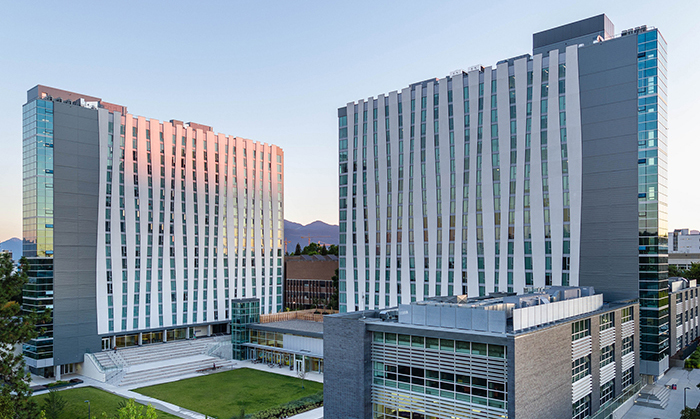
Orchard Commons Residence includes student housing, outdoor recreational space, a daycare, and the popular resident dining hall, Open Kitchen. Credit: UBC Brand and Marketing.
Animating the campus
The new housing commons at UBC Vancouver —Orchard, Ponderosa and in the future, Brock Commons — are designed as multi-purpose hubs with housing on upper floors, academic uses on the lower floors and restaurants, markets, recreational and cultural spaces open to the public on the street level, like the Audain Art Centre in Ponderosa Commons.
“That makes them really alive at night,” says Parr. “We’ve not just added housing, we’ve added activity to the campus that everyone, not just students who live here, benefits from.”
Two other factors contribute to the newfound liveliness. First, the new developments have stitched the campus together. “Pre-Ponderosa, if you lived in Vanier Park, you had to walk a block of nothingness past a parking lot, which didn’t feel safe,” Parr explains. “Now you walk past a well-lit building bustling with life. It’s created new energy on campus — people who live in Vanier feel like they live in the heart of things.”
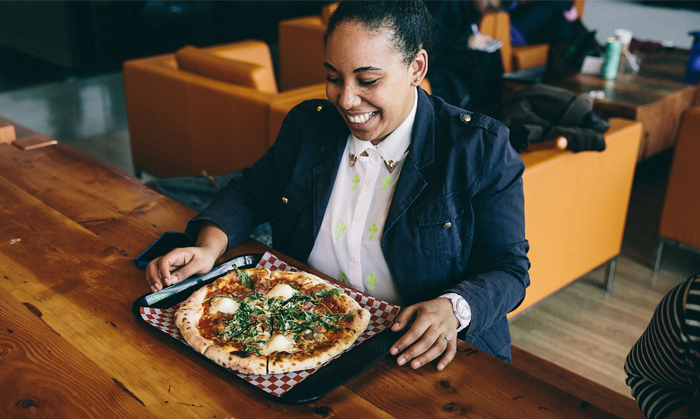
Enjoying a freshly baked pizza at Mercante located on the street level of Ponderosa Commons. Credit: UBC Brand and Marketing.
Second, the new Commons offer food amenities for both building residents and the broader campus community. These include Mercante, an Italian eatery in Ponderosa South that serves excellent pasta and flat crust pizza; Open Kitchen, the large resident dining rooms in Orchard Commons; and Harvest and the other small grocery stores or delis in all the new buildings. All stay open late in the evenings and on weekends, which draws in customers from farther afield, such as residents of Marine Drive.
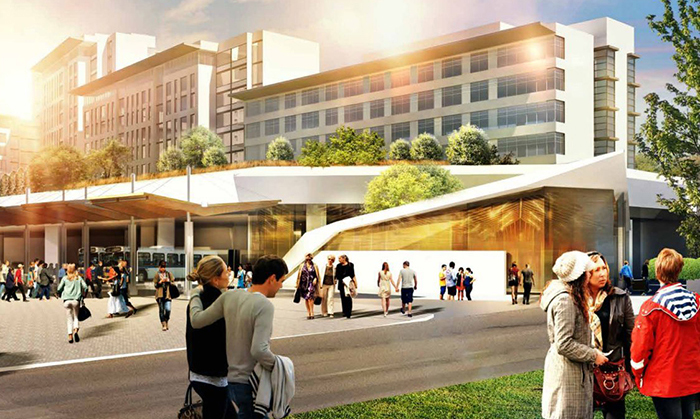
Illustration of the new Exchange student residence building. Credit: DIALOG
A Great Place to Live
No wonder students who live on campus are happier, healthier and more engaged than students who commute. A 2017 study by Academic Group of five Canadian universities, including UBC, showed that living in residence has a clear positive impact for students’ first-year-GPA, retention to second year, and graduation rates.
A decade ago, students stayed in residence for first year and then moved out; now thousands are staying for their entire undergrad period, or even beyond.
“We keep hearing that it’s a great place to live,” says Gerry McGeough, Director, Planning and Design with Campus and Community Planning.
As rents off campus spiral ever-higher and availability hovers just above zero, demand for student housing on campus is growing, especially as rents off campus continue increase. This trend has been seen for a few years. In 2011, the waitlist was 3,200 at the summer peak. This summer, despite the addition of 3,500 beds, it had risen to just over 6,300.
The good news is four more residence buildings will be opening on campus over the next three years; each are at different stages of development. Exchange Residence, with 630 beds will open in the summer of 2019 and three more residences are in the planning phases. By 2022 in UBC Vancouver, there will be approximately 14,000 beds for students, about 2,200 more than there are today.
These residences provide more than just housing for students. They bring together academic spaces, day care and more food options, all with generous outdoor spaces creating more space for people to gather, relax and study - breathing more life into the campus core.